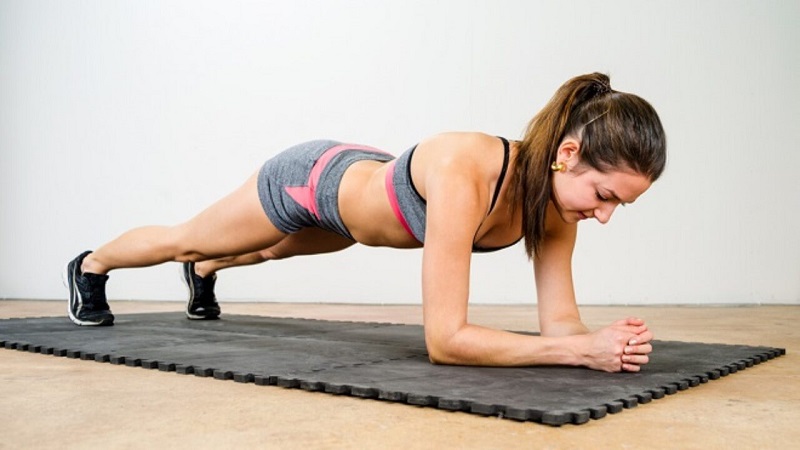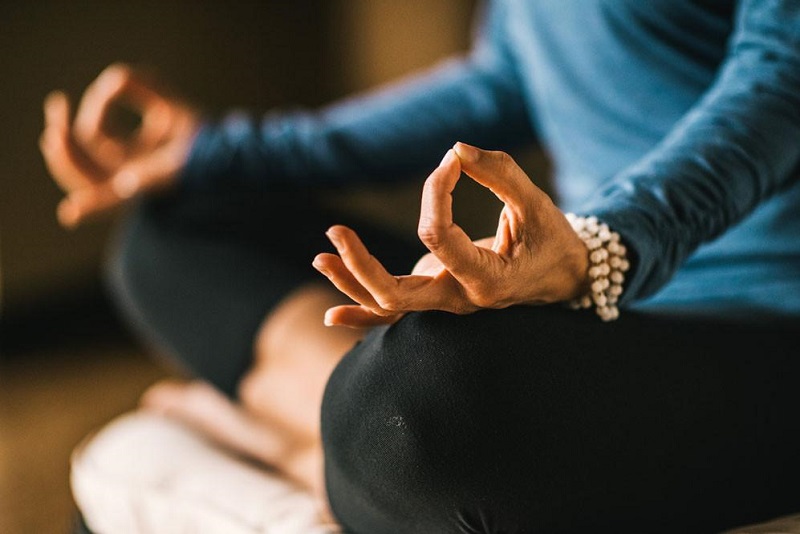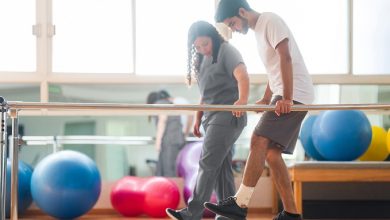Isotonic contraction: essential in good rehabilitation practice

A well-done asana must be stable, firm and comfortable, a condition that is achieved thanks to the isotonic contractions of the muscles. Let’s see how to consciously perform this contraction.
One of the most recognized sutras in the world of yoga is Sthira Sukham Asanam. Let’s go back etymologically to the meaning of each word that composes it. We can understand that it refers to the qualities that asanas should possess: stability, firmness and softness, comfort. This condition of firmness and stability when we do an asana comes hand in hand with isotonic contractions.
What is an isotonic contraction?
Movement occurs when a muscle is stimulated, causing it to act, and giving rise to what is known as “isotonic contractions”. An isotonic contraction is an effect on the muscles that involve their fibers, creating tension in themselves.
We could say that it is a physiological process in which the muscles develop a certain tension, and shorten or lengthen and remain at the same length, depending on the type of contraction.
Different types of contractions
In concentric contraction, the muscle acts, generating tension to overcome a certain resistance. Thus, there is a shortening of the muscle fibers and later mobilizing some part of the body.
Eccentric contraction. In this case, faced with resistance, we exert tension on the muscle while lengthening it. In other words, it would be like “lengthening” it.
An Isotonic contraction is a static form of exercise in which a muscle contracts to produce force with no apparent change in muscle length and no appreciable joint movement.
Implement an Isotonic contraction
When we practice Vinyasa, for example, when entering and leaving the asanas that make up the sequence, we apply the first two contractions: concentric and eccentric. But when we stay in the asana, we should consciously apply sustained isotonic contractions, but surely our mind does not incorporate it since attention is not usually paid.
In general, we tend to focus on the dynamics of our Vinyasa (transition between asanas) rather than permanence. It is more evident when we practice Hatha or Iyengar. But this does not mean that we cannot apply it in more dynamic styles like Vinyasa. That there is less time does not mean that we cannot do it.
Leaving aside that moment (apparently static) means not incorporating those patterns of stability and strength that our body needs to stay healthy.
How to Create Stability and Increase Accuracy
Very rarely is a single muscle involved in the movement. To create stability around a joint and gain precision, it is necessary to generate coactivation in several muscles: in agonists (they are responsible for the main action of movement) and antagonists (they oppose movement but not enough to prevent movement).
Isotonic Contractions
This coactivation is achieved thanks to sustained isotonic contractions and is necessary to keep the axis of rotation around which the movement occurs stable, allowing smooth and controlled movement. This is especially important for the joints of the spine, pelvis, shoulders, and knees.
When a load is being supported, it is necessary to exercise this type of contraction, which will produce a muscular coactivation necessary to maintain the good health of our joints.
It is imperative to understand that just as we need to keep a joint stable when there is a load, it is also necessary for the joints to stress and move within their range of motion when there is no load. By finding this balance, the joints remain strong and healthy.
Specific examples of this type of contraction
For example, in the shoulder joint, when we do the lateral plank (Vashistasana): do the test of pushing the hand that remains on the mat down and forward Isotonically (without movement), you will notice that the shoulder muscles are more strong, you will even feel that your pelvis weighs less.
This action of pushing your hand down and forward will produce isotonic contraction of the shoulder muscles, which creates stability for the glenohumeral joint. We will apply this action of rejecting the mat with our hands whenever we are bearing weight (against gravity) to prevent shoulder injuries, for example, Adhomukha Svanasana, Chaturanga, Phalakasana, etc.
In Virabhadrasana II and other asanas
In Virabhadrasana II (Warrior II), which needs a strong and stable foundation, the following isotonic contraction is made: once in the asana, imagine that the feet want to meet in the middle of your mat (your front foot pushes Isotonically towards the back and the back Isotonically forward).
Notice how your legs are empowered and how, in addition, your hip and knee joints are stabilized. This same contraction could be applied to all standing asanas and is very beneficial in preventing knee hyperextension (for example, in Trikonasana Parsvakonasana, Virabhadrasana I, etc.)
So to finish, whenever you find yourself staying in the asana, activate your muscles from the foundation. Not only will you feel that your body is empowered, but you will also feel more fluid in the transitions you make in your Vinyasa due to the conscious control of your body.




